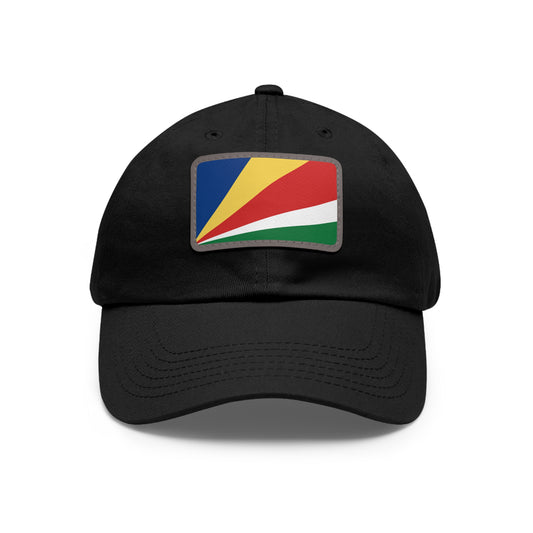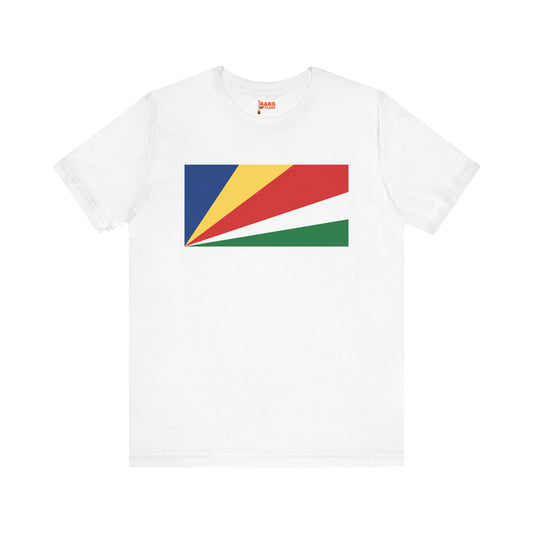-
Seychelles Flag Sweatshirt
Regular price $34.15 USDRegular priceUnit price / per -
Seychelles Sweatshirt
Regular price $34.15 USDRegular priceUnit price / per -
Seychelles Pillow
Regular price $22.65 USDRegular priceUnit price / per -
Seychelles Backpack
Regular price $59.79 USDRegular priceUnit price / per -
Seychelles Leather Patch Hat
Regular price $18.85 USDRegular priceUnit price / per -
Seychelles Mug
Regular price $11.65 USDRegular priceUnit price / per -
Seychelles Trucker Cap
Regular price $14.90 USDRegular priceUnit price / per -
Seychelles Hoodies
Regular price $34.40 USDRegular priceUnit price / per -
Seychelles T-shirts
Regular price $22.79 USDRegular priceUnit price / per -
Seychelles Flag Hoodies
Regular price $34.40 USDRegular priceUnit price / per -
Seychelles Flag on T-shirt
Regular price $22.79 USDRegular priceUnit price / per
Collection: Seychelles
The Seychelles flag symbolizes pride and unity for the people of this beautiful island nation. With its unique design and vibrant colors, the flag of Seychelles stands out among the world's flags. We will explore the unexpected stories and fascinating facts surrounding the Seychelles flag.
Overview of the Seychelles Flag Design and Colors

The Seychelles flag is instantly recognizable due to its distinct design featuring five oblique bands spread out in a radiating pattern from the bottom left corner. These bands come in a palette of blue, yellow, red, white, and green, each chosen for their deep symbolic connections to the Seychellois environment and society. The blue band symbolizes the vast Indian Ocean surrounding the islands and the clear sky above, reflecting the nation's identity as an island country. Yellow represents the sun, the source of light and life, illuminating the path to progress and prosperity. The red stripe stands for the people of Seychelles, highlighting their unity and determination to build a brighter future. White is a symbol of social justice and harmony, values that are deeply ingrained in the national consciousness. Finally, the green band embodies the lush landscapes and rich flora of the islands, underscoring the importance of environmental conservation. Together, these colors and their arrangement convey a message of optimism, diversity, and unity, mirroring the vibrant culture and natural beauty of Seychelles.
Historical Context of the Seychelles Flag
The journey to the current Seychelles flag has been marked by change and evolution, reflecting the nation's dynamic history and aspirations. Before the present design was adopted on June 18, 1996, Seychelles underwent several flag changes, each symbolizing a different epoch from colonial to independent nationhood. The adoption of this flag came as the country was redefining its identity following the end of British colonial rule in 1976. This period was characterized by a search for symbols that could encapsulate the essence of the newly independent nation’s spirit and aspirations.
The 1996 flag represented a break from the past and a collective step toward a new national narrative centered on unity, diversity, and progress. Its introduction marked a significant milestone in the country's history, embodying the optimism and the forward-looking stance of the Seychellois people. This flag was a new national emblem and a declaration of the country's sovereign status on the global stage, signaling Seychelles' readiness to chart its own course in international affairs.
Symbolism Behind the Seychelles Flag

The Seychelles flag carries profound symbolic meanings within its vibrant design. Each color on the flag is meticulously chosen to reflect crucial elements of Seychellois life and values. The blue band symbolizes the Indian Ocean, encompassing the islands and representing freedom and vast possibilities. Yellow, evoking the sun's brightness, signifies the Seychellois people's hope and determination in their pursuit of prosperity. Red captures the essence of the people's unity and love for their country, indicating a willingness to work together for a better future.
White signifies social justice and harmony, core principles guiding the nation's conscience and dealings with the world. Green pays homage to Seychelles' lush, verdant landscapes, reminding everyone of the importance of environmental stewardship and the rich biodiversity the nation is committed to preserving. Together, these colors weave a narrative of unity in diversity, a celebration of the natural environment, and a commitment to the ideals of progress, justice, and harmony among the Seychellois people. The arrangement of the bands in a radiating pattern speaks to the dynamism and outward-looking nature of the country, emphasizing its forward motion toward growth and unity.
Current Relevance of the Seychelles Flag
Today, the Seychelles flag continues to be a vibrant emblem of national identity and pride, displayed prominently at various events, from state ceremonies and military parades to cultural festivals and sports competitions. It flies high on government buildings, educational institutions, and public squares, serving as a constant reminder of the country's unity, values, and aspirations. Discussions around the flag's design and symbolism occasionally surface, sparking healthy debates among citizens on national identity, progress, and the evolving narrative of Seychelles in the contemporary world. These conversations underscore the dynamic relationship between the nation and its flag, highlighting its role as a static symbol of the past and an active participant in shaping the country's future. As Seychelles navigates the challenges and opportunities of the 21st century, the flag remains an enduring symbol of the people's hopes, dreams, and commitment to their island nation.
Additional Facts About the Seychelles Flag
A sense of reverence and national pride marks the protocols surrounding displaying and handling the Seychelles flag. The flag must never be allowed to contact the ground, and when raised or lowered, it must be done so in a manner that reflects the nation's dignity. This careful treatment underscores the deep respect the Seychellois have for their national emblem.
Interestingly, the flag distinguishes itself globally by eschewing traditional symbols or emblems in its design. Instead, it relies on a vibrant array of colors and a dynamic pattern to encapsulate the country's essence and aspirations. This departure from the conventional approach to flag design is a testament to the unique character of Seychelles and its people.
Another intriguing aspect of the Seychelles flag is its origin. The current design was conceived by a local artist, lending a deeply personal and authentic dimension to its symbolism. This fact is a source of pride for Seychellois, as it reflects the creativity and spirit of their nation. The artist's contribution has created a visually striking national symbol and woven into it the collective hopes, dreams, and values of the Seychellois people.
These additional facts make it evident that the Seychelles flag is more than just a national emblem. It is a reflection of the country's soul, reflecting its journey, culture, and the aspirations of its people while also standing as a symbol of unity and pride on the world stage.






















